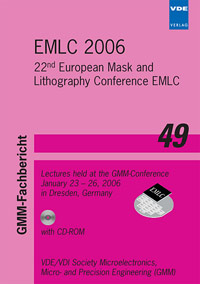A technique to determine capability to detect adjacent defects during the die-to-database inspection of reticle patterns
Konferenz: EMLC 2006 - 22nd European Mask and Lithography Conference
23.01.2006 - 26.01.2006 in Dresden, Germany
Tagungsband: EMLC 2006
Seiten: 10Sprache: EnglischTyp: PDF
Persönliche VDE-Mitglieder erhalten auf diesen Artikel 10% Rabatt
Autoren:
Avakaw, Syarhei; Korneliuk, Aliaksandr; Tsitko, Alena (Design Office for Precision Machine Building, Opto-Mechanical Equipment “KBTEM-OMO” of “Planar” Concern, Partizansky Ave., 2, 220763 Minsk, Republic of Belarus)
Inhalt:
The paper analyses the factors which influence minimal features of detected adjacent defects during the die-to-database inspection of reticles. The analysis of influence of a set of factors, describing an instrumental error of the automatic reticle inspection system, and of a set of factors, describing a reticle patterning process, on various types of adjacent defects is made. Some relations are cited, describing interrelation of the size of the minimal adjacent defect and the pixel size of the automatic reticle inspection system. A concept of the optimum and preset sizes of the minimal detected defect is introduced. The analysis of dependence of the number of false defects on the size of the preset minimal detected adjacent defect is made, as well as a criterion to choose an optimum capability of detection of adjacent defects is given. In conclusion, parameters of automatic reticle inspection systems developed at Planar Concern are given, specifying the adjacent defects detection capability. Also the parameters of the systems designed for 0.35 µm, 0.18 µm and 65 nm processes are described.


